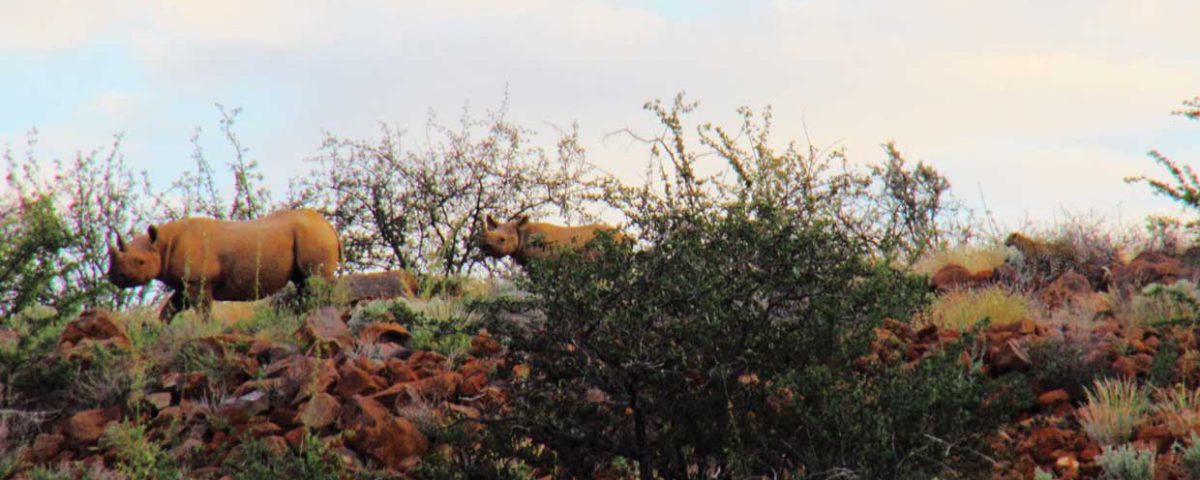| Main photo ©Jurgen Schlettwein

A two-fold approach to kudu disease control
June 9, 2016
Some of us still foster dreams at the age of 70
June 9, 2016Herbivores as well as carnivores are descended from insect eating ancestors which evolved some 65 million years ago, soon after dinosaurs became extinct. The first carnivorous mammals, called Creodonta, had longish bodies and small brains. They thrived and continued to evolve for as long as the herbivores remained clumsy and dull-witted. But when the herbivores developed further only one family of the creodonts was able to keep up with the pace: the Miacidae. They were small weasel-like creatures with a relatively large brain. All of today’s carnivores are descended from this ancestor.
E ver since carnivorous mammals appeared on our planet about 60 million years ago, evolution probably produced no other animal as perfectly adapted to hunting as the leopard. With its stocky, powerful body shape he is the ultimate carnivore. The full extent of his extraordinary beauty and elegance becomes apparent when he is in motion. Even zoological laymen will sense that the leopard, surrounded by an aura of mystery, is one of nature’s masterpieces.
Leopards have the widest range among the big cats. Except for the desert areas they can be found all over Africa, in parts of the Arabian Peninsula, most of Asia as far east as Manchuria and Korea, as well as in Indonesia. The leopard is the only big cat that occurs in Africa’s tropical rain forests. In large parts of Africa and Asia, where leopards used to live in the shadow of lions and tigers respectively, they have maintained their ground whereas lions and tigers (and even smaller feline species) have been hunted to extinction.
Leopards are territorial loners and socialise only for brief periods for the purpose of mating. Females are on heat about every 46 days and usually give birth to two cubs. The territory is marked with urine and droppings, and by sharpening their claws on the trunks of trees and scratching the ground with their hind paws. Furthermore, leopards make their presence known with loud rasping calls.
They eat any type of protein, from insects to ungulates twice as heavy as themselves.
Due to their stealthy ways and their weariness leopards are rarely seen, even though they are nocturnal as well as diurnal.
A hunter is of course particularly attracted to an animal as secretive and fascinating as this. And since a wounded or cornered leopard is extremely dangerous, many a tale is told about this species. Opportunities to hunt leopard are mostly found in Zimbabwe, Zambia, Mozambique, Tanzania, Namibia and the Central African Republic. The classic method consists of baiting a strong old male. The biggest number of professional hunters who are experts in this respect is possibly found in Zimbabwe.
The prospects of a successful leopard hunt with bait vary considerably. It has to be kept in mind that in terms of baiting there are three different kinds of leopard. There are the strong, bold and confident types that go for the bait with ease. Then there are the opportunists which feed on the bait in passing but do not return, while the predominant third kind does not accept any bait at all. Bold and confident leopards are typical for undisturbed wilderness areas (big game concessions), but they are very rare in areas with a lot of human pressure (farming areas). Thus the prospects of a successful leopard hunt largely depend on the hunting area. Leopards exposed to heavy hunting pressure have ‘learnt’ through the process of negative selection to stay away from bait. The opportunistic types that feed on bait in passing but do not return and those that do not accept bait at all are predominant in such areas. If, however, a leopard kill is found in a farming area the leopard can be hunted at the kill with the same methods and equal prospects of success as at a baiting site in the best big game hunting concession – without the leopard displaying his proverbial shrewdness. But as soon as the leopard becomes wary, a game of cat and mouse ensues: now the leopard is watching the hunter and returns to the bait or his kill with the greatest boldness and caution only after the discouraged and bleary-eyed hunter has gone home.
Lastly, in order to avoid disappointment among hunting guests, a word about the weight that a strong leopard can be expected to have. These days, some claim (completely unrealistically) that a strong leopard tips the scales at 80 to 95 kg. That type of weight has to be seen as an extraordinary, totally rare exception. According to scientists, such as Richard Estes, male leopards weigh in at 35 to 65 kg. Not one of the more than three dozen leopards, bagged by my hunting guests, weighed 80 kg. One weighed 70 kg, two weighed between 60 and 63 kg and the majority of the really strong males weighed between 47 and 52 kg.
“In large parts of Africa and Asia, where leopards used to live in the shadow of lions and tigers respectively, they have maintained their ground whereas lions and tigers (and even smaller feline species) have been hunted to extinction.”
This article was translated from the Erongo Verzeichnis für Afrikanisches Jagdwild Volume 1/12 www.erongo-rekordbuch.com



